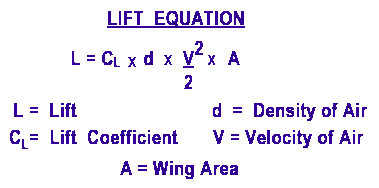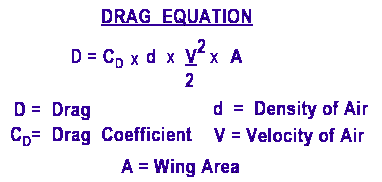Countries like China, Singapore, and Japan routinely rank number one in both math and science, while America often ranks in the middle or last among industrialized nations. Despite reform efforts, America's antiquated assembly-line style education system continually churns out rudderless adults, ill-prepared workers, and in general people who view education as a formality to 'get ahead'. Quite simply, American education kills the idea of auto-didactic learning in the heads of our youth, ties the hands of instructors who spend 30% of the year teaching towards multiple-guess standardized testing, and relies more on lecture than on a tactile learning approach. High schools in our great country have been transformed largely into Maximum Security Day-Care Centers.
So what's the solution? Should we adopt the Asian model; the model of rote memorization, longer school days, and a stronger study ethic? Work more, study harder, and live less? Or is there a different option; perhaps an option of quality over quantity? The answer is yes. Try Finland's model. A model based on no standardized testing, shorter school days, starting school at an older age, starting school at a later hour, making the basics a priority, less homework, cooperation over competition, free nutritious lunch, fostering a more relaxed atmosphere, and providing professional options past a traditional college degree.
As Dr. Ryzhkov states, "What education's really about is encouraging natural curiosity and critical thinking, developing emotional intelligence, and learning how to be a decent human being."
TEACHING THE PRINCIPLES OF FLIGHT
Click here for NASA's take on the Wright Brothers' plane design.
| Forces Acting on An Airplane |
There are four forces acting on the airplane all the time during airplane is flying.The four forces are |
 |
Lift: is produced by a lower pressure created on the upper surface of an airplane's wings compared to the pressure on the wing's lower surfaces,causing the wing to be LIFTED upward. The special shape of the airplane wing (airfoil) is designed so that air flowing over it will have to travel a greater distance and faster resulting in a lower pressure area (see illustration) thus lifting the wing upward. Lift is that force which opposes the force of gravity (or weight). |
 |
Lift depends upon (1) shape of the airfoil (2) the angle of attack (3) the area of the surface exposed to the airstream (4) the square of the air speed (5) the air density. |
 |
Weight: The weight acts vertically downward from the center of gravity (CG) of the airplane. |
Thrust: is defined as the forward direction pushing or pulling force developed by aircraft engine . This includes reciprocating engines , turbojet engines, turboprop engines. |
 |
Drag: is the force which opposes the forward motion of airplane. specifically, drag is a retarding force acting upon a body in motion through a fluid, parallel to the direction of motion of a body. It is the friction of the air as it meets and passes over an airplane and its components. Drag is created by air impact force, skin friction, and displacement of the air. |
 |
| Aircraft Flight Control |
An airplane is equipped with certain fixed and movable surfaces or airfoil which provide for stability and control during flight. These are illustrated in the picture. |
 |
Each of the named of the airfoil is designed to perform a specific function in the flight of the airplane. The fixed airfoils are the wings, the vertical stabilizer, and the horizontal stabilizer. The movable airfiols called control surfaces, are the ailerons, elevators, rudders and flaps.The ailerons, elevators, and rudders are used to "steer" the airplane in flight to make it go where the pilot wishes it to go. The flaps are normally used only during landings and extends some during takeoff. |
Aileron: may be defined as a movable control surface attached to the trailing edge of a wing to control an airplane in the roll, that is , rotation about the longitudinal axis. |
Elevator: is defined as a horizontal control surface, usually attached to the trailing edge of horizontal stabilizer of an airplane, designed to apply a pitching movement to the airplane. A pitching movement is a force tending to rotate the airplane about the lateral axis,that is nose up or nose down. |
Rudder: is a vertical control surface usually hinged to the tail post aft of the vertical stabilizer and designed to apply yawing movement to the airplane, that is to make it turn to the right or left about the vertical axis. |
 |
Wing Flaps: are hinged or sliding surfaces mounted at the trailing edge of wings and designed to increase the camber of the wings. The effect is to increase the lift of the wings. |
HOW ABOUT A VISCERAL TACTILE APPROACH
A wise man once said – “Tell me and I forget, teach me and I may remember, involve me and I learn.” - Benjamin Franklin
For instance, when teaching the principles of flight, one can give a Powerpoint presentation followed up by a quiz, or students can acquire the knowledge through a hands on approach.
Bernoulli is credited with coming up with the principles that were later applied to flight. In fluid dynamics, Bernoulli's principle states that an increase in the speed of a fluid occurs simultaneously with a decrease in pressure or a decrease in the fluid's potential energy. The principle is named after Daniel Bernoulli who published it in his book Hydrodynamica in 1738.
In 1901 Gustave Whitehead built a crude plane and performed the first flight, however for various reasons the Wright Brothers were given the recognition for their test flight in 1903.
Here two teams built prototypes based on these pioneers.
Gustave Whitehead's plane design won the competition :)













No comments:
Post a Comment